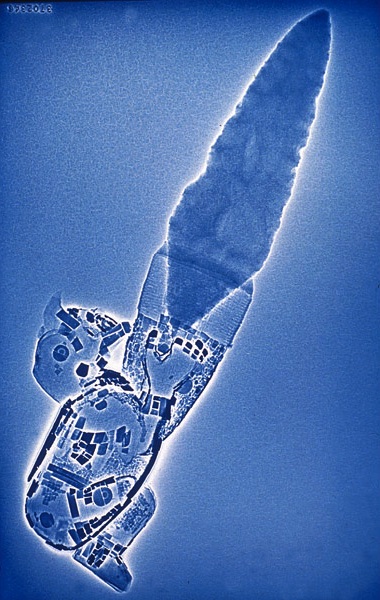So, I went to see Moctezuma at the BM this week. And yes, if you’re wondering, Moctezuma II (or even more correctly, according to Wikipedia, Motecuhzoma Xocoyotzin) is the man I always thought was called Montezuma: the ruler of the Aztec empire when Hernán Cortés and his conquistadors conquered Mexico. Except that apparently they weren’t ‘Aztec’ either; they referred to themselves as ‘Mexica’.

It’s hard to believe it has been seven years since the Royal Academy’s mega-exhibition about the Aztecs; this show is nowhere near as large or spectacular as that one. And it’s more narrowly focussed on a particular geographical and historical moment; the city of Tenochtitlan and the fall of the Aztec empire. Which does at least mean that it’s easier to take in the information, even if most of the exhibits are a bit less jaw-dropping. And it means that they can supplement the Aztec material with stuff from the Spanish perspective: colonial paintings and so on.
It’s certainly worth going to, although I wouldn’t say it was the most exciting exhibition I’ve been to recently. One thing I found interesting was what you might call the ‘deathcult problem’. The Mexica civilisation was kind of revolting. The sacred courtyard at the centre of Tenochtitlan was built around a temple where they ritually sacrificed their captured enemies. It also featured a skull rack where they could display the skulls afterwards. That’s the kind of design feature that would seem a bit OTT in a Hollywood representation of Mordor. And so it’s a curatorial problem: do you emphasise the gore? downplay it? make any kind of ethical comment?
Generally this exhibition chose to downplay it — not to disguise it, but not to place too much specific emphasis on it either. I guess I think that’s fair enough; better that than salaciously revelling in it, or stigmatising a whole civilisation as somehow subhuman. And presumably they can rely on their visitors to realise for themselves that ripping the hearts out of the living chests of their enemies is a Bad Thing. And yet somehow the studiedly non-judgmental tone of the blurbs and the audioguide, which seemed to treat ritual human sacrifice as just another intriguing cultural quirk like using thorny oyster shell for decoration, left me a little queasy.
Not that the Spanish were exactly saintly themselves; they killed a large chunk of the population of Tenochtitlan in a moment of panic, just for starters. But at least the killing was a by-product of a ruthless lust for gold and power, rather than the central organising principle of their society. Going round all the skull-covered Aztec stuff feels a bit like being at an exhibition of Nazi regalia. Though having said that, an exhibition of religious art from C16th Spain would probably have a bit of a death cult quality to it, with all that graphic martyrdom all over the place. So to sum up: people are a bit creepy.
Also on at the BM at the moment is a very nice little free exhibition of dogū — that is, prehistoric clay figurines from Japan. I didn’t know anything about dogū, so I found it interesting. And they are striking objects.
» The image is an x-ray of a knife with a mosaic handle and a chalcedony blade. They reckon it’s a sacrificial knife but that it isn’t robust enough to have actually been used, so it’s probably ceremonial.